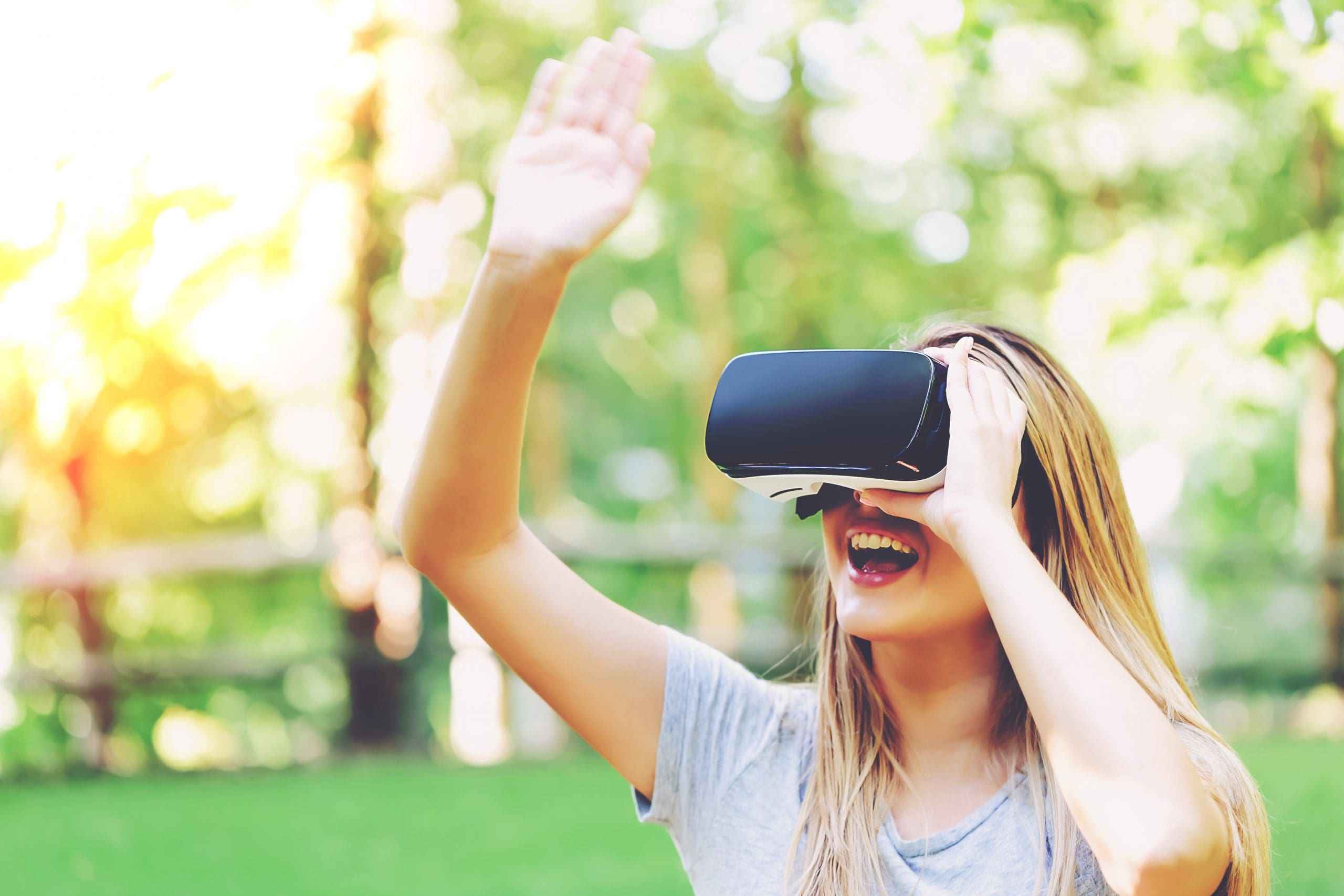
If someone says virtual reality (VR) or augmented reality (AR), you might assume the terms are interchangeable, but VR and AR are two different technologies with separate features. These two tools are additional methods to consider when it comes to presenting designs to your clients.
Studies have shown that VR and AR presentations increase the perception of spatial references, allow more details to be seen and come across as realistic and impressive thanks to the stereoscopic view.
Virtual Reality
VR is an immersive simulation that requires a headset device. Over recent years, VR has become more widespread thanks to gaming, automotive, healthcare and other industries finding different uses for this technology. Some landscape companies like Bright Home Landscapes have already started offering VR walkthroughs with Oculus.
VR can be used to take your 3D landscape designs to the next level by placing your client in the space. You can add textures, materials and geolocate sunlight. This could help a client see that an area in the landscape where they wanted to place their vegetable garden won’t get the full sun it needs or realize they want the walkway from the patio to flow differently.
Interactive virtual environments can also let you show the client several different options within the virtual space, helping them be better informed when it comes to decision-making.
Because VR is a computer-generated 3D simulation, having sufficient CPU, GPU and memory on your computer are critical. Depending on the software you use will determine how time-consuming it is to create a VR visualization. Some platforms, like Vectorworks, have an option that transforms your 2D drawing into a VR visualization.
When to present a VR walkthrough depends on your client’s preferences and your turnaround time. For some projects, it may not be necessary to show them their landscape in this format for them to get on board. In other situations, viewing the space virtually can speed up the decision-making process for the customer.
Augmented Reality
AR is a technologically augmented representation of the real world through the addition of digital information when viewed through a device like a smartphone or a tablet. Pokemon GO is one of the well-known examples of AR, but it’s also being adopted by online retailers to help consumers see how products fit in their homes.
With AR, you can project a 3D image into a real-life setting. This technology is more accessible since it doesn’t require a VR headset. AR can blend your digital design features into your client’s real-world backyard so they can picture exactly how your proposed landscape enhancements would work with their current space. This technology can also save time, preventing a designer from having to build out an entire virtual environment. They can just focus on creating the design enhancements.
AR is particularly helpful in the vision-planning stage as it can help clients create an emotional connection as they see the proposed changes superimposed on their backyard.
While both methods have benefits, these presentation options require time and money for the proper hardware and systems to create these visuals. Evaluate if adding these technologies would be beneficial in speeding up your design process or closing sales before investing.

